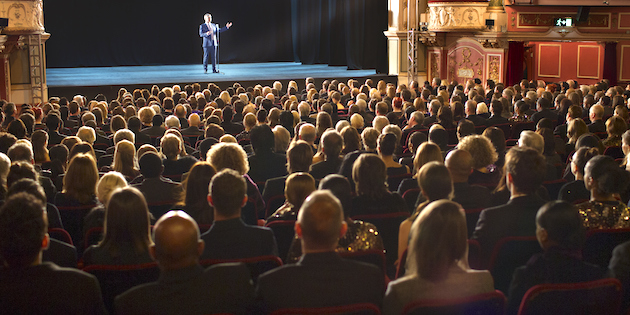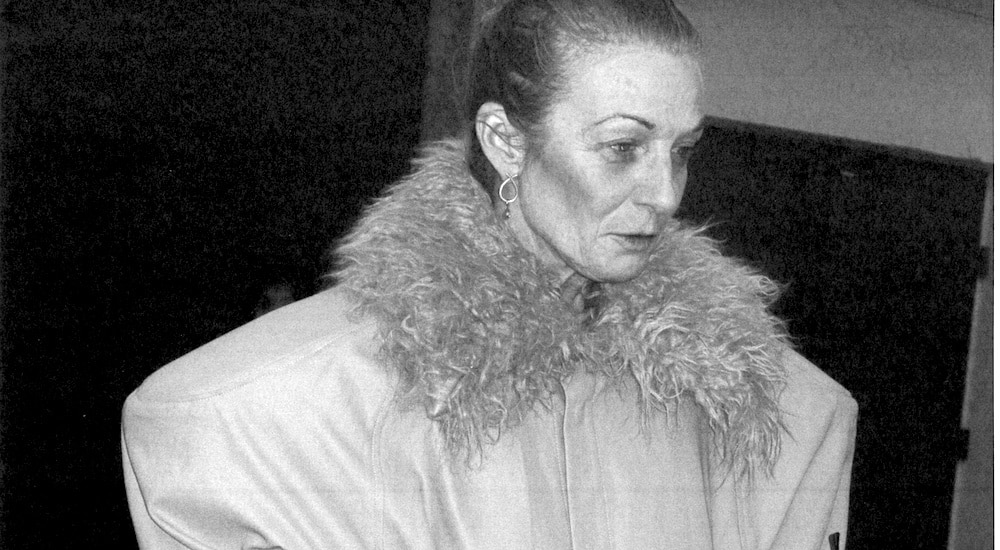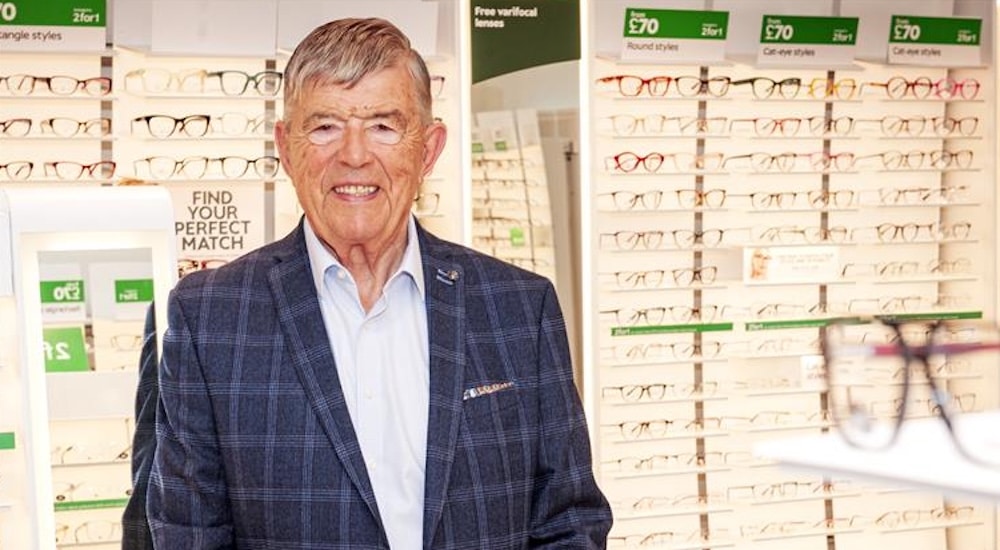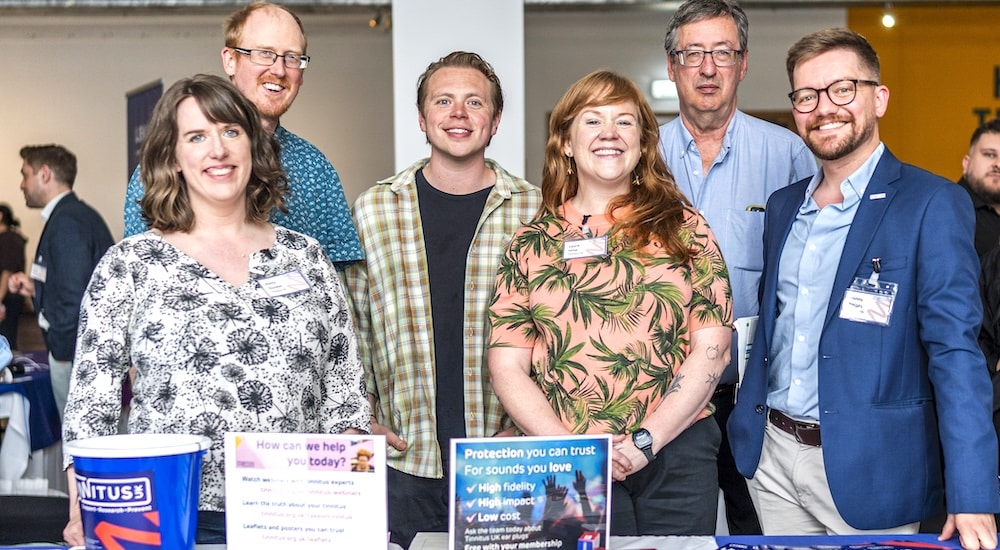TO HEAR...OR NOT TO HEAR, that IS the question!
Why is a visit to the theatre still such an anti-climax for hearing instrument users? BIHIMA's Liz Pusey asked a challenged audience what the experience is and where it might go in the next act.

Susan Hamilton loves going to the theatre and regularly goes with friends and family to watch a show. As a hearing aid user, her experience can be very different than it is for those around her.
After years of experiencing hearing loss, Susan is well prepared. She contacts venues ahead of time to ask about the assistive listening systems in place and visits the venue in advance to test the available system before the show, identifying who is best to speak to in case of any issues.
Yet in recent months, she has only had two problem-free visits to a theatre out of 12 performances attended. From out-of-date systems to ineffective technology and a night where the headphones provided picked up every backstage call alongside the performance audio; it’s rarely straightforward.
No one-size fits all solution: “hearing devices are prescriptive to an individual’s hearing loss.”
Susan said: “The staff I encounter are most often very eager to help, but unfortunately the systems seem to be managed or tested by people who don’t live with hearing loss, and they don’t know what to do if I say it hasn’t worked. I have found that loop system (telecoil) headphones can work well and can be more easily tested by theatre staff, but these are more suitable for people who don’t use hearing instruments. As a device user, I have tried many times to switch to the T setting and connect to a dongle worn around my neck, however it seems these have rarely been tested by anyone who wears a hearing aid.”
“As soon as the curtain goes up the theatre is in darkness, and it becomes very difficult to see handset controls or ask for help if it’s needed. Despite everyone’s best efforts, many performances still leave me very frustrated.”
“I have friends who use different hearing instruments and we’ve all experienced similar challenges. On occasions we’ve gone to theatre together, and each had a different outcome when using the same system, which just shows how variable it can be. We need people to understand that hearing devices are prescriptive to an individual’s hearing loss, therefore offering a single system simply cannot work. It’s like offering the same pair of glasses to everyone with a sight impairment and expecting them to all see perfectly. Theatres are very keen to try and make performances accessible, but from my experience we certainly aren’t there yet.”
©Ivan Bajic – amphotora – iStock Shakespeare’s line “Thy words fall into my ears as priceless as water into a seive” might capture the thoughts of many hearing impaired persons sitting in theatres.
This is not a new issue. Accessibility in theatres has long been a hot topic and most venues ensure there are assistive listening systems in place to remove the barriers for people with hearing impairments who want to enjoy a show. There are various technologies available, including hearing loop, telecoil, Bluetooth, captions on stage or caption glasses, but each has pros and cons when used in different environments and do not always guarantee that people who are deaf or live with hearing loss can enjoy a show.
The challenge lies within this range of options. There is certainly no one-size-fits-all approach, yet at the same time having only one system in place is not inclusive. The lack of standardisation means for hearing device users every visit brings a new experience, new tech to familiarise yourself with, another visit before the show to ensure you know what you need to do, and still no promise that it will work effectively when the first act begins.
Unacceptable barriers to hearing in theatres
Paul Surridge, chair of the British and Irish Hearing Instrument Manufacturers Association (BIHMA), said: “In 2023 we should not be in a situation where hearing instrument users are still experiencing these barriers. Looking through the accessibility information published on theatre websites you can see the disparity in support; for some it’s a priority and for others it’s almost a tick-box exercise.
PW Paul Surridge, BIHIMA chair: “We’d welcome a collective agreement to drive positive change in the industry, such as a minimum level of service those with hearing loss can expect.”
AccessAble is an organisation that has surveyed tens of thousands of venues including theatres, shops, restaurants, hotels, universities, hospitals and many more, to provide a comprehensive accessibility guide. Beth Wooller is an ambassador for AccessAble ad lives with hearing loss. She said: “As someone with a hearing loss who uses hearing aids and lip reading, I find the mixed and often unpredictable experience of theatre-going can put me off going to the theatre at all.”
“It often seems that every theatre has a different accessibility booking process and sound quality during the performance, with staff’s deaf awareness varying greatly at every stage. I often rely on my companion to repeat large parts of the performances otherwise I feel very left out. While improved hearing aid systems are being put in place, more subtitled performances and easier access to seats near the front to lipread would be welcomed. AccessAble’s website takes some of the stress out of theatre-going, and I’d love to see more theatres sign up and show their commitment to being truly inclusive.”
Daniel Adams Photography Beth Wooller: ” often rely on my companion to repeat large parts of the performances.”
A collective agreement on a minimum level of service?
Bluetooth Auracast has been hailed as the next generation of assistive hearing technology and seems to have the potential to resolve many of the challenges created by the current inconsistencies in system availability and experience. As a simple explanation, an Auracast transmitter can broadcast a signal to Auracast receivers and assistants (such as smartphones and hearing instruments) to notify them that there is audio available, and the user can select that transmission to listen to.
This innovation has yet to reach the market but could be a significant development in how people experience audio in venues such as theatres, train stations or shopping centres.
Paul Surridge continued: “It’s clear that venues need to better understand how their chosen systems work and to offer effective alternatives. Until we can test new technologies such as Auracast we’d welcome a collective agreement to drive positive change in the industry, such as a minimum level of service those with hearing loss can expect.”
About BIHIMA
BIHIMA represents the hearing instrument manufacturers of Britain and Ireland, working in partnership with other professional, trade, regulatory and consumer organisations within the health care and charitable sectors. We raise consumer awareness about the latest hearing technology and aim to influence government and policy makers to improve the lives of people with hearing difficulties.
Source: Audiology News UK issue 04 – September/October 2023





